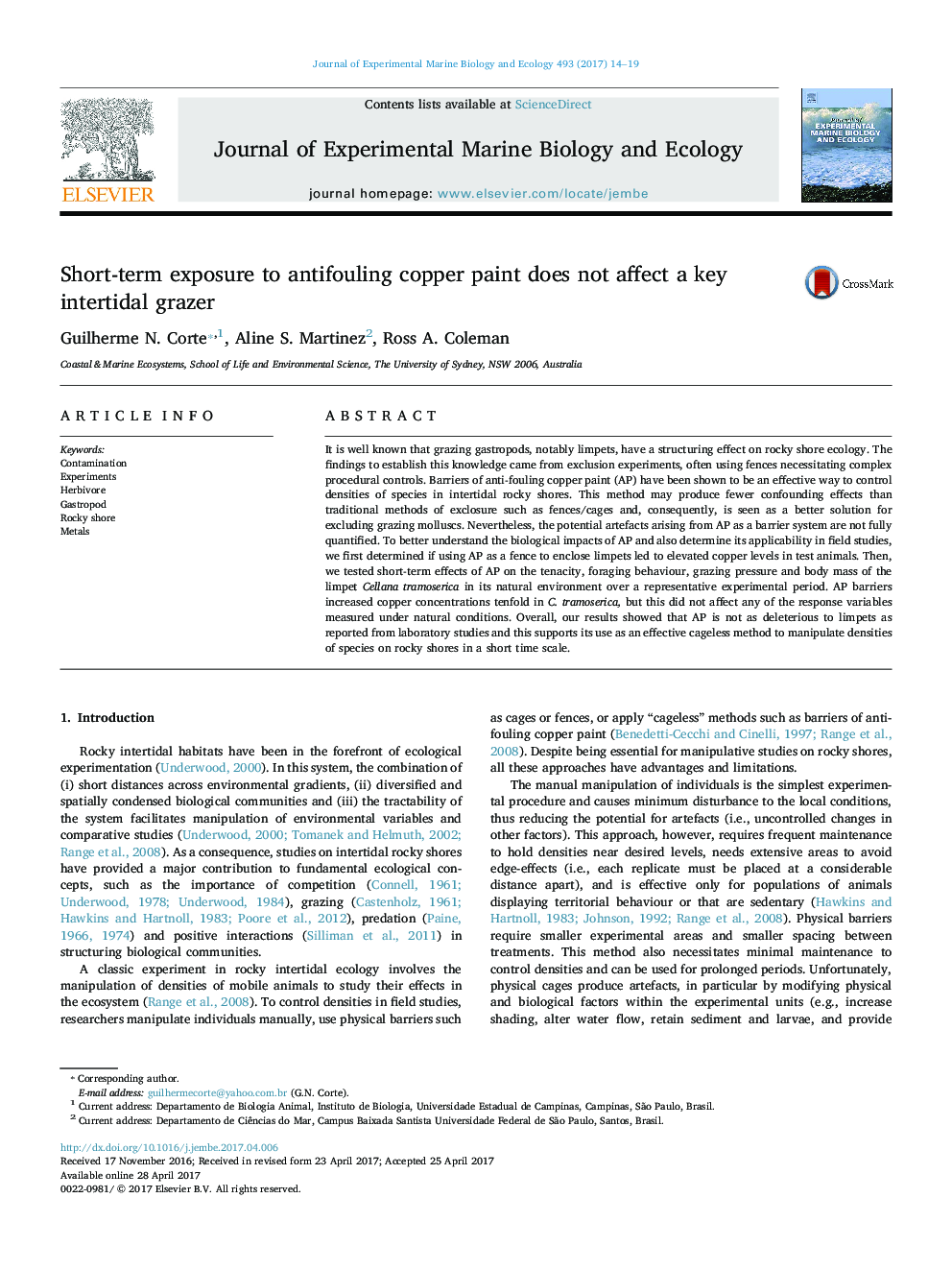| Article ID | Journal | Published Year | Pages | File Type |
|---|---|---|---|---|
| 5744495 | Journal of Experimental Marine Biology and Ecology | 2017 | 6 Pages |
â¢Anti-fouling copper paint (AP) is an effective way to control densities of species.â¢However, artefacts related to AP as a barrier system are not fully quantified.â¢We tested effects of AP on the limpet Celana tramoserica.â¢AP increased Cu concentrations in C. tramoserica, but did not affect its behavior.â¢Our results therefore validate the use of AP in experiments on this species.
It is well known that grazing gastropods, notably limpets, have a structuring effect on rocky shore ecology. The findings to establish this knowledge came from exclusion experiments, often using fences necessitating complex procedural controls. Barriers of anti-fouling copper paint (AP) have been shown to be an effective way to control densities of species in intertidal rocky shores. This method may produce fewer confounding effects than traditional methods of exclosure such as fences/cages and, consequently, is seen as a better solution for excluding grazing molluscs. Nevertheless, the potential artefacts arising from AP as a barrier system are not fully quantified. To better understand the biological impacts of AP and also determine its applicability in field studies, we first determined if using AP as a fence to enclose limpets led to elevated copper levels in test animals. Then, we tested short-term effects of AP on the tenacity, foraging behaviour, grazing pressure and body mass of the limpet Cellana tramoserica in its natural environment over a representative experimental period. AP barriers increased copper concentrations tenfold in C. tramoserica, but this did not affect any of the response variables measured under natural conditions. Overall, our results showed that AP is not as deleterious to limpets as reported from laboratory studies and this supports its use as an effective cageless method to manipulate densities of species on rocky shores in a short time scale.
